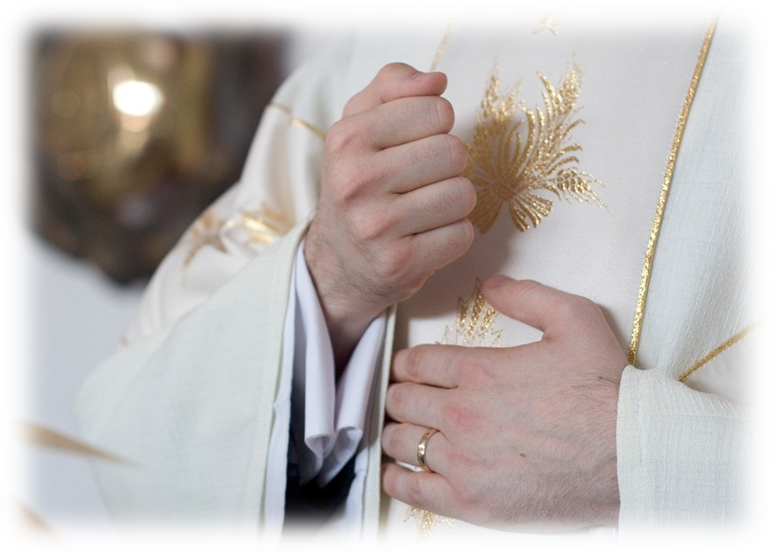
My fault
I am a sinner. And changing the world must start with myself.
“My most grievous fault”. But where does the idea of striking the breast at the same time come from?
Probably only twice and only in Luke’s Gospel do we find in the New Testament a reference to beating the breast. The first time in the parable about the Pharisee and the tax collector. Let’s remind ourselves: the first praises himself for his fidelity to the law. The other, as described in Jesus’ parable by the Evangelist, confessing to God his sinfulness, “beat his breast”. The second time the breast is beaten is by the witnesses of the death of Jesus on the cross, probably frightened by the signs that accompanied the event. In both cases it is a clear expression of remorse and contrition: yes, I have sinned, we have sinned; have mercy on me God. Today, repeating this gesture – during one of the penitential rites, while saying “through my fault, through my fault, through my most grievous fault” – we treat in a similar way. But where did the idea for such an expression of repentance come from?
It’s hard to say with all certainty. Most probably it is a gesture connected to an Old Testament definition for sinners. No, not that they are “brass-necked” or “brazen-faced”. Rather, calling them people with hardened, unrepentant hearts. Ezekiel says it straight: “I will take the stony heart out of their flesh and give them a heart of flesh, that they may walk in my statutes and keep my ordinances and obey them; and they shall be my people, and I will be their God” (Ez 11:19-20) and “A new heart I will give you, and a new spirit I will put within you; and I will take out of your flesh the heart of stone and give you a heart of flesh” (Ez 36:26). The gesture of beating the breast is, therefore, a sign of crushing this heart of stone: yes, Lord, I am ready crush my hard heart, I am ready to submit to Your will.
And this is how this gesture is understood in the Christian tradition: as sign of willingness to crush the stony heart hardened by being in sin.
The gesture of striking the breast is also found in other prayers. In accordance with the instruction to the priest in Eucharistic Prayer I, the priest strikes his breast once as he says: “To us, also, your servants, who, though sinners”. But the gathered people do not. However, the instructions are silent on performing during the saying of: “Lord, I am not worthy to receive you under my roof, . . .” and similarly at other times in the liturgy. However, nothing stands in the way of using it in your private prayers.
Because it is a beautiful gesture. It reminds me: my heart is hardened, I am a sinner, I need contrition and conversion. I need it. And others . . . .
Probably also, that a person begins to change the world starting with themselves. And those who are aware of what they are doing when they perform this gesture, likely also understand this. Those who do not understand sometimes also beat themselves with quite some energy. Most often it’s about their not own but other people’s breasts. And most often it doesn’t lead to anything good. It only increases stubbornness, anger and strife. Psychologists may say that striking your own breast and constantly reminding yourself of your sinfulness is unnecessary and is what gives rise in many Catholics a sense of guilt. Yes . . . there will be some in which the sense of guilt looking at it objectively will be too great. This the confessor helps with. Who helps those who hide from their own guilt and make their own behaviour righteous with a small measure of good? And think that good is what they themselves do? Such an absence of the sense of one’s own guilt, the inability to admit it even if only to themselves leads to an eternity of principled arguments and a holy-war free for all. Am I making this up? Just look around today’s world. Look especially at social media . . .